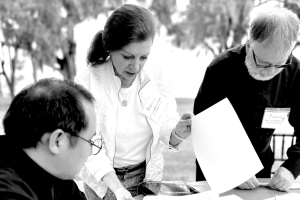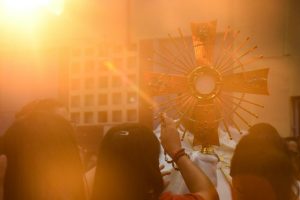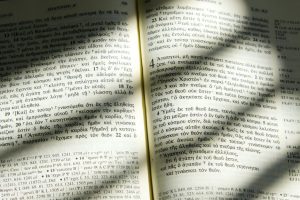It’s not as difficult—or expensive—as you might think to build a green parish.
Church design is evolving as people reawaken to the ancient wisdom that the environment is a series of exquisite interconnections. Forward-looking congregations are building and renovating in ways that reflect the belief that God resides in the world and all creation resides within God.
Older churches are often key community landmarks, so their preservation has social as well as environmental implications. Because existing structures possess “embodied energy,” the energy used to make and transport the building’s materials, reusing them is, by its very nature, more energy-efficient.
Many inexpensive steps can be taken to green an older church, such as installing zoned heating systems; installing occupancy sensors, which automatically turn lights on or off in spaces that have sporadic use; and caulking, weather-stripping, and insulating pipes and roofs. Such corrections can pay for themselves in less than a year.
For new construction, congregations should look for architects who have designed and built green buildings, preferably houses of worship or similar institutional structures. Ideally, the design team would also include environmentally responsible mechanical and structural engineers and landscape architects to ensure the greenest possible building.
LEED certification, a rating system administered by the U.S. Green Building Council (USGBC), is the recognized standard for measuring building sustainability. Congregations can find LEED-certified architects and contractors on the USGBC site. The caveat is that anyone can become LEED-certified by studying and passing a test; the key is finding someone who also has practical experience.
To green new buildings, follow the old maxim, location, location, location. “More energy is used getting to and from the building than is used by the building itself. A building’s location is essential—it should be easily accessible by public transportation or by walking. Religious communities could make a huge environmental impact simply by encouraging carpooling. It also builds community,” says Jonathan F. P. Rose, president of Jonathan Rose Companies, a leading developer of affordable green construction.
It’s not necessarily more expensive to build green. “If all you do is add solar panels to an older building, for example, you will spend more money,” Rose says. “But if you rethink the building, reorganize it to bring in more daylight, invest more in insulation, you will typically spend no more than one percent more in creating a very green building. Green means stripped of indulgence, but full of essence.”
This article is a web-only feature that accompanies Upon this empty lot and New homes for old treasures, which appeared in the April 2011 issue of U.S. Catholic magazine (Vol. 76, No. 4, page 12-17).












Add comment